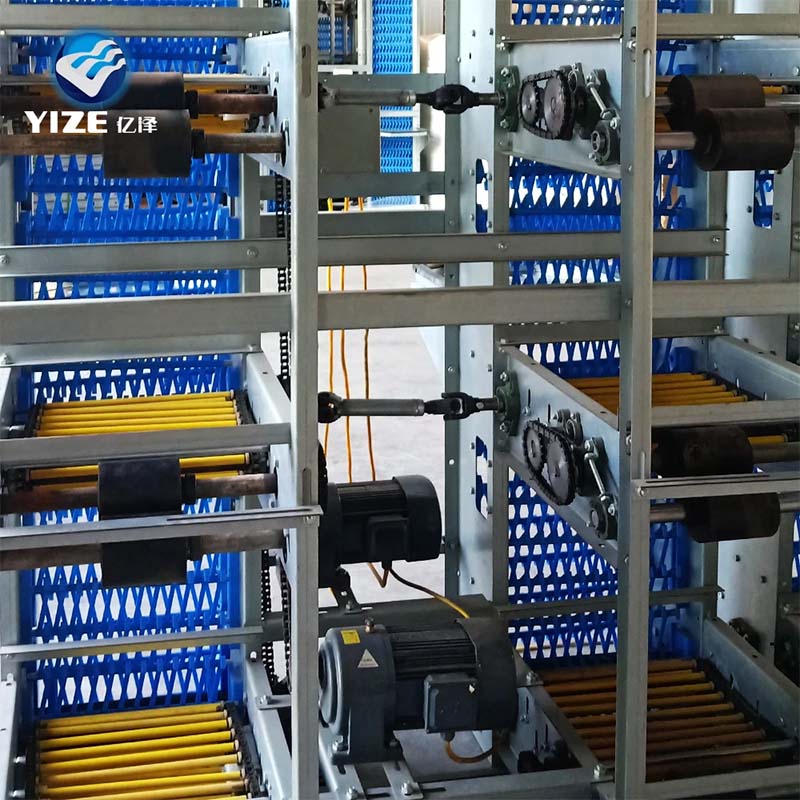Efficient Layer Cage Systems for Modern Poultry Farming Solutions
Sep . 29, 2024 03:47 Back to list
Efficient Layer Cage Systems for Modern Poultry Farming Solutions
The Benefits and Challenges of Layer Cages in Poultry Farming
Poultry farming, specifically the production of eggs through layer hens, is a vital part of the global agricultural economy. As the demand for eggs increases due to rising populations and changing dietary preferences, farmers continuously seek efficient methods of production. One popular approach is the use of layer cages, which are designed to house hens in a confined space to maximize production and minimize waste. This article explores the benefits and challenges of layer cages in poultry farming.
Benefits of Layer Cages
1. Increased Production Efficiency Layer cages allow for higher stocking densities compared to traditional free-range systems. Each cage can house several hens, leading to more eggs produced per square meter. This system is particularly effective in commercial settings where optimal egg production is crucial for profitability. Studies have shown that hens in cage systems typically lay more eggs than their free-range counterparts, largely due to reduced stress and better management of their living conditions.
2. Enhanced Biosecurity Caged systems provide a controlled environment that can significantly reduce the risk of disease transmission among birds. By limiting their interactions with wild birds and other animals, the chances of spreading infections such as avian influenza or salmonella are minimized. This biosecurity measure is essential for maintaining the health of flocks and ensuring a steady supply of eggs.
3. Improved Resource Management Automation and controlled feeding systems are more easily implemented in layer cages. Farmers can optimize feed usage and monitor the health of individual birds more effectively, leading to better resource management. This reduces overall feed costs and enables farmers to achieve higher profit margins. Additionally, waste can be collected and managed more efficiently, making nutrient recycling easier.
4. Better Egg Quality Hens in layer cages often produce higher-quality eggs with fewer cracks and blemishes. The reduced movement and stress levels result in better shell quality, which is critical for both consumer satisfaction and shelf life. Moreover, controlled lighting and feeding schedules characteristic of caged systems can lead to more consistent egg production.
poultry farm layer cage

Challenges of Layer Cages
1. Animal Welfare Concerns One of the primary criticisms of layer cages is the ethical concern regarding animal welfare. Hens in traditional cages often have limited space to move around, leading to discomfort and stress. Critics argue that the confinement can result in unnatural behaviors, such as feather pecking and aggression. This has led to increased scrutiny from animal rights organizations and consumers who prioritize humane farming practices.
2. Regulatory Changes As public awareness of animal welfare grows, regulatory bodies across various countries have begun implementing stricter regulations regarding the use of layer cages. Some areas have banned traditional battery cages altogether, pushing farmers to adopt alternative systems such as enriched cages, which provide more space and amenities. This shift can require significant investments in infrastructure and changes in farming practices.
3. Initial Investment Costs The financial outlay for establishing a layer cage system can be substantial. Although the long-term operational costs may be lower due to increased productivity and efficient resource management, the initial investment in caging infrastructure and technology can be a barrier for smaller farmers. This may limit the accessibility of layer cages as an option for all poultry farmers.
4. Dependence on a Single System Over-reliance on caged systems can lead to vulnerabilities in poultry farming. Should diseases spread, or if market preferences shift towards cage-free eggs, farmers may find themselves unprepared. Diversifying production methods can help mitigate these risks, encouraging a more sustainable approach to poultry farming.
Conclusion
Layer cages in poultry farming offer a range of benefits, from increased efficiency and biosecurity to improved egg quality. However, they also pose significant challenges related to animal welfare and potential regulatory shifts. As the poultry industry evolves, finding a balance between efficiency and humane practices will be crucial in meeting both consumer demands and ethical standards. Farmers must stay informed and adaptable, considering the long-term implications of their production methods on both the environment and animal welfare.
-
Hot Sale 24 & 18 Door Rabbit Cages - Premium Breeding Solutions
NewsJul.25,2025
-
Automatic Feeding Line System Pan Feeder Nipple Drinker - Anping County Yize Metal Products Co., Ltd.
NewsJul.21,2025
-
Automatic Feeding Line System Pan Feeder Nipple Drinker - Anping County Yize Metal Products Co., Ltd.
NewsJul.21,2025
-
Automatic Feeding Line System - Anping Yize | Precision & Nipple
NewsJul.21,2025
-
Automatic Feeding Line System - Anping Yize | Precision & Nipple
NewsJul.21,2025
-
Automatic Feeding Line System-Anping County Yize Metal Products Co., Ltd.|Efficient Feed Distribution&Customized Animal Farming Solutions
NewsJul.21,2025






